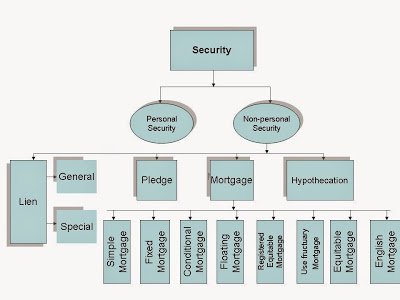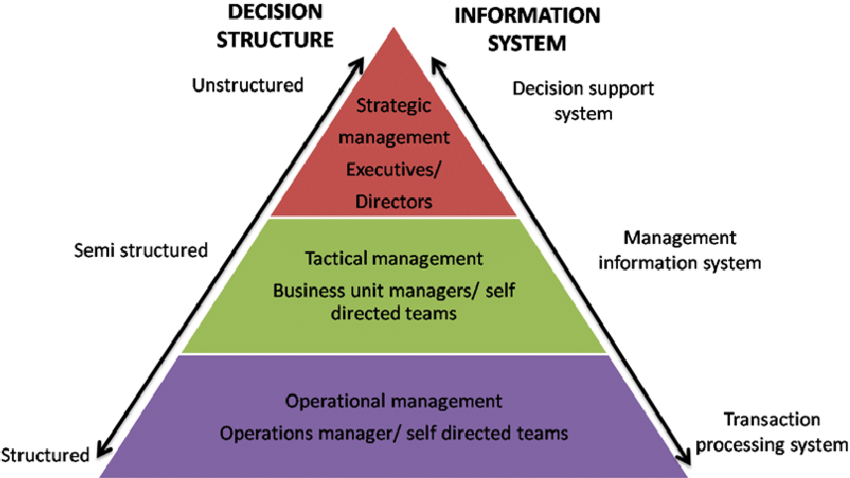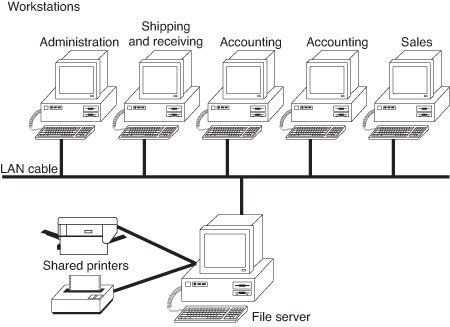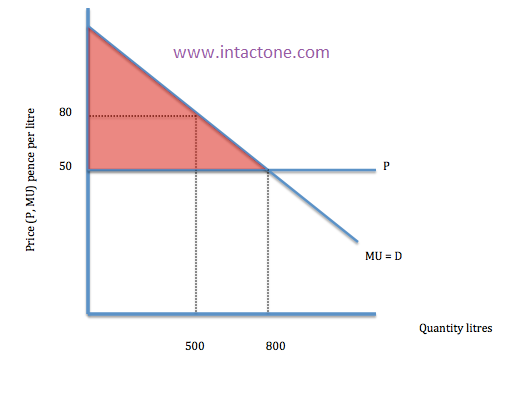Entrepreneurship is the process of identifying, developing, and managing a business idea into a profitable venture while taking calculated risks. It involves innovation, creativity, leadership, and the ability to recognize opportunities in dynamic environments. Entrepreneurs mobilize resources such as capital, labor, and technology to establish businesses that generate value for society.
The essence of entrepreneurship lies in problem-solving—creating goods or services that fulfill market needs and improve people’s lives. Unlike routine business operations, entrepreneurship emphasizes innovation and adaptability. Entrepreneurs not only contribute to economic development but also stimulate employment, competition, and technological advancement.
In modern economies, entrepreneurship extends beyond profit-making to include social entrepreneurship, which focuses on societal development, and green entrepreneurship, which promotes sustainability. Startups, particularly in technology, agriculture, and services, have redefined entrepreneurship by leveraging digital tools and global networks.
Entrepreneurship is therefore both an economic activity and a mindset—a way of thinking that embraces change, uncertainty, and risk in pursuit of opportunity. Successful entrepreneurs demonstrate resilience, vision, and decision-making skills that help them navigate challenges and create long-term impact. In the era of globalization and innovation, entrepreneurship acts as a key driver of progress, competitiveness, and inclusive growth.
Characteristics/Nature of Entrepreneurship:
Entrepreneurship is driven by innovation, which involves introducing new products, processes, or business models. Entrepreneurs identify gaps in the market and create unique solutions that add value. Innovation not only differentiates a startup but also helps in achieving a competitive edge. By leveraging creativity, entrepreneurs disrupt traditional practices and generate efficiency, affordability, and improved customer experiences. Innovation is thus the cornerstone of entrepreneurship, enabling both economic growth and societal progress.
A defining characteristic of entrepreneurship is risk-taking. Entrepreneurs often operate in uncertain environments where outcomes are unpredictable. They take financial, social, and psychological risks to establish and grow ventures. While risk does not guarantee success, entrepreneurs manage it strategically through research, planning, and adaptability. Their ability to embrace risk reflects confidence and resilience. Without the courage to step into uncertainty, many groundbreaking businesses and opportunities for economic development would not exist.
Entrepreneurs are visionary leaders who see opportunities where others see challenges. They have the ability to predict trends, set long-term goals, and inspire others toward achieving them. Their leadership ensures that resources, teams, and strategies are aligned with the business vision. Visionary leadership not only motivates employees but also attracts investors, partners, and customers. Entrepreneurs with a strong vision create businesses that endure challenges and contribute significantly to industry transformation and innovation.
Effective decision-making is essential in entrepreneurship. Entrepreneurs frequently face complex situations requiring quick, informed choices. They analyze risks, evaluate alternatives, and choose strategies that maximize opportunities while minimizing losses. Good decision-making ensures efficient resource utilization and business continuity. Entrepreneurs must balance intuition with data-driven analysis to succeed. Their ability to make timely decisions in uncertain circumstances determines the survival and growth of the venture, making decision-making a critical entrepreneurial trait.
- Resilience and Perseverance
Entrepreneurship involves numerous challenges such as financial difficulties, competition, and market failures. Resilience and perseverance are key characteristics that help entrepreneurs navigate setbacks. Rather than giving up, successful entrepreneurs learn from failures and re-strategize. Perseverance builds credibility with stakeholders, while resilience strengthens their ability to recover from crises. These traits ensure that entrepreneurs remain committed to their goals despite obstacles, making resilience and perseverance indispensable qualities for long-term entrepreneurial success.
Entrepreneurs excel in mobilizing resources such as capital, technology, and human talent to build businesses. They identify, acquire, and utilize resources efficiently to maximize productivity. Effective resource mobilization includes networking, securing investments, and forming strategic partnerships. Entrepreneurs with this skill ensure their ventures remain financially viable and competitive. By optimizing available resources and identifying new ones, entrepreneurs maintain agility and sustainability, which are crucial for business growth and expansion in dynamic environments.
- Customer-Centric Approach
A successful entrepreneur understands the importance of customers as the foundation of business success. They focus on identifying customer needs, preferences, and behaviors to create tailored products and services. Customer-centric entrepreneurs actively engage with feedback, ensuring continuous improvement. By prioritizing customer satisfaction and building strong relationships, they develop loyalty and trust, which sustains long-term growth. A customer-first approach distinguishes businesses in competitive markets and fosters lasting relevance in changing economic conditions.
- Adaptability and Flexibility
Entrepreneurship operates in dynamic environments where markets, technologies, and consumer preferences change rapidly. Entrepreneurs must be adaptable and flexible to survive and thrive. Adaptability means adjusting business models, strategies, and operations in response to shifts, while flexibility ensures openness to new ideas and approaches. Entrepreneurs who embrace change proactively are better equipped to capitalize on opportunities and handle disruptions. This characteristic ensures sustainable growth and resilience in volatile and uncertain markets.
Importance of Entrepreneurship:
Entrepreneurship plays a vital role in driving economic growth by creating new businesses, industries, and jobs. Entrepreneurs introduce innovations that boost productivity and efficiency across sectors. Their ventures attract investments, stimulate trade, and generate wealth. By fostering competition and new market opportunities, entrepreneurship strengthens economies and reduces dependency on traditional industries. As a result, countries with vibrant entrepreneurial ecosystems experience faster economic development and are better positioned to adapt to global economic shifts.
One of the most significant contributions of entrepreneurship is employment creation. Startups and small businesses absorb a large portion of the workforce, especially in developing economies. Entrepreneurs hire skilled, semi-skilled, and unskilled workers, reducing unemployment and underemployment. Beyond direct jobs, they create indirect opportunities in supply chains, logistics, and support services. By fostering job diversity and providing innovative work models, entrepreneurship contributes to inclusive growth and helps reduce poverty through sustainable employment opportunities.
- Innovation and Technological Advancement
Entrepreneurs introduce innovative ideas, processes, and technologies that transform industries. They challenge existing norms and create breakthroughs in fields like healthcare, agriculture, and digital services. Entrepreneurship fosters research and development (R&D), leading to cutting-edge solutions that improve efficiency and quality of life. By leveraging new technologies, entrepreneurs promote modernization, disrupt outdated models, and make services more accessible. Such technological advancements not only benefit local communities but also enhance global competitiveness and knowledge sharing.
- Promoting Regional Development
Entrepreneurship helps reduce economic imbalances by encouraging business growth in rural and semi-urban areas. Agro-based startups, handicraft ventures, and local enterprises create income opportunities and infrastructure development outside metropolitan regions. This decentralization reduces migration to cities and supports balanced regional growth. Entrepreneurs also bring new industries to underdeveloped regions, improving education, healthcare, and living standards. By channeling resources into local economies, entrepreneurship strengthens social equity and bridges the rural-urban development divide effectively.
- Enhancing Global Competitiveness
In an interconnected world, entrepreneurship enhances a nation’s competitiveness by fostering efficiency, innovation, and productivity. Startups expose local industries to international markets through exports, collaborations, and digital platforms. Entrepreneurs create brands and products that represent national strengths on the global stage. By improving quality, reducing costs, and innovating rapidly, they allow economies to compete with advanced nations. This global competitiveness ensures economic resilience, attracts foreign investments, and positions countries as leaders in international trade.
- Wealth Creation and Distribution
Entrepreneurship contributes significantly to wealth generation by creating profitable ventures that add value to economies. Entrepreneurs generate income for themselves, employees, investors, and governments through taxes. Unlike wealth concentration in traditional monopolies, entrepreneurship ensures wider distribution of wealth through opportunities for small businesses and startups. This circulation of income fosters purchasing power, supports community development, and sustains growth. By empowering individuals to participate in wealth creation, entrepreneurship enhances financial inclusion and societal progress.
Entrepreneurship extends beyond profits to address social needs through innovations in education, healthcare, and sustainability. Social entrepreneurs design solutions for issues like poverty, clean energy, and affordable housing. By integrating social responsibility with business, entrepreneurs uplift marginalized communities and foster inclusive development. Startups focusing on sustainable practices reduce environmental harm while improving living standards. Thus, entrepreneurship serves as a tool for both economic and social transformation, ensuring a balance between growth and equity.
- Encouraging Self-Reliance
Entrepreneurship nurtures self-reliance by promoting business ownership and reducing dependency on government jobs or foreign companies. Entrepreneurs cultivate independence by creating opportunities and solving problems using local resources. This mindset fosters confidence, resilience, and innovation within societies. Nations with strong entrepreneurial ecosystems achieve economic independence by reducing imports, boosting exports, and sustaining local industries. At an individual level, entrepreneurship empowers people to take control of their economic futures, fostering pride and financial security.
Factors influencing Entrepreneurship:
Economic conditions strongly influence entrepreneurship. Factors like availability of capital, infrastructure, raw materials, and market demand determine entrepreneurial activity. A stable economy encourages investment and business growth, while inflation, high taxes, or poor credit availability discourage startups. Entrepreneurs thrive in environments with supportive financial institutions, easy access to loans, and favorable trade policies. Economic stability ensures predictability, allowing entrepreneurs to take risks and innovate, making economic factors the most fundamental driver of entrepreneurship.
- Social and Cultural Factors
Social and cultural values play a crucial role in shaping entrepreneurial behavior. Communities that encourage independence, risk-taking, and innovation create strong entrepreneurial ecosystems. Cultural attitudes toward wealth, success, and social mobility also influence entrepreneurship. Family support, societal recognition, and community networks motivate individuals to start ventures. Conversely, rigid traditions or resistance to change may hinder entrepreneurship. Therefore, supportive social structures and progressive cultural norms foster an environment where entrepreneurial ideas can flourish effectively.
- Political and Legal Factors
A stable political system and supportive government policies encourage entrepreneurship. Transparent regulations, simplified licensing, tax benefits, and ease of doing business create a conducive business environment. Conversely, excessive bureaucracy, corruption, or unpredictable policies discourage entrepreneurs. Laws related to intellectual property rights, labor, and trade also impact entrepreneurial activity. Countries with strong governance attract more startups and foreign investments. Thus, political stability and favorable legal frameworks are essential for entrepreneurial confidence and long-term sustainability.
Technology drives modern entrepreneurship by enabling innovation, efficiency, and market expansion. Access to advanced tools such as AI, IoT, blockchain, and automation empowers entrepreneurs to create competitive products and services. Digital platforms facilitate global reach and reduce operational costs. However, lack of technological infrastructure can hinder growth, especially in developing regions. Startups thrive in tech-friendly environments where research and development (R&D) is promoted. Technological advancements are therefore both enablers and accelerators of entrepreneurship.
- Educational and Skill Factors
Education enhances entrepreneurial ability by equipping individuals with knowledge, skills, and confidence. Entrepreneurial education fosters creativity, problem-solving, and risk management. Institutions offering business programs, incubators, and mentorship opportunities build entrepreneurial ecosystems. Skilled labor availability also supports ventures, ensuring productivity and innovation. Lack of education or vocational training, however, limits entrepreneurial growth. Thus, quality education and skills development play a critical role in producing entrepreneurs capable of managing businesses effectively and driving long-term success.
- Psychological and Personal Factors
Entrepreneurship is greatly influenced by an individual’s mindset, personality, and motivation. Traits like risk-taking, resilience, creativity, leadership, and ambition determine entrepreneurial success. A strong need for achievement and independence motivates individuals to pursue ventures despite challenges. Confidence in decision-making and adaptability to uncertainty are also crucial. Conversely, fear of failure or low self-efficacy discourages entrepreneurship. Ultimately, personal attitudes and psychological strength act as the foundation upon which entrepreneurial ventures are built and sustained.
- Environmental and Geographical Factors
Geographical conditions, natural resources, and local environments significantly influence entrepreneurship. Regions rich in raw materials, fertile lands, or favorable climates promote agro-based and resource-driven startups. Similarly, industrial clusters or urban centers with good connectivity provide advantages for manufacturing and services. Infrastructure like transport, energy, and communication also shapes entrepreneurial opportunities. Conversely, poor infrastructure or adverse climates can hinder business growth. Thus, environmental and geographical conditions determine the type and scale of entrepreneurial activity.
- Global and Market Factors
Globalization and market dynamics have a profound impact on entrepreneurship. Open markets, international trade agreements, and access to global customers create vast opportunities for entrepreneurs. Competitive markets push entrepreneurs toward innovation and efficiency. Global trends like sustainability, digitalization, and e-commerce also influence entrepreneurial ventures. However, global economic downturns or supply chain disruptions can pose risks. Entrepreneurs who adapt quickly to international trends and demands remain competitive, making global and market forces vital influencers.
Key Elements of Entrepreneurship:
After having studied the concept of entrepreneurship, now let us look at some key elements that are necessary for entrepreneurship. We will be looking at four of the most important elements.
An entrepreneur is the key source of innovation and variation in an economy. It is actually one of the most important tools of an entrepreneurs success. They use innovation to exploit opportunities available in the market and overcome any threats.
So this innovation can be a new product, service, technology, production technique, marketing strategy, etc. Or innovation can involve doing something better and more economically. Either way in the concept of entrepreneurship, it is a key factor.
Entrepreneurship and risk-taking go hand in hand. One of the most important features of entrepreneurship is that the whole business is run and managed by one person. So there is no one to share the risks with.
Not taking any risks can stagnate a business and excessive impulsive risk-taking can cause losses. So a good entrepreneur knows how to take and manage the risks of his business. But the willingness of an entrepreneur to take risks gives them a competitive edge in the economy. It helps them exploit the opportunities the economy provides.
Vision or foresight is one of the main driving forces behind any entrepreneur. It is the energy that drives the business forward by using the foresight of the entrepreneur. It is what gives the business an outline for the future – the tasks to complete, the risks to take, the culture to establish, etc.
All great entrepreneurs of the world that started with an entrepreneurship business are known to have great vision. This helps them set out short term and long term goals for their business and also plan ways to achieve these objectives.
In entrepreneurship, it is essentially a one-man show. The entrepreneur bears all the risks and enjoys all the rewards. And sure he has the help of employees and middle-level management, yet he must be the one in ultimate control. This requires a lot of organization and impeccable organizational skills.
An entrepreneur must be able to manage and organize his finances, his employees, his resources, etc. So his organizational abilities are one of the most important elements of entrepreneurship.
Role of Entrepreneurship in Economic Development:
Entrepreneurship significantly reduces unemployment by creating job opportunities across sectors. Startups and small enterprises hire both skilled and unskilled labor, absorbing the workforce that large corporations or governments cannot fully accommodate. They also stimulate indirect employment in allied industries such as logistics, supply chains, and services. By diversifying job opportunities, entrepreneurship enhances income distribution and reduces poverty. This role is crucial in developing nations where rapid population growth increases the demand for sustainable employment.
Entrepreneurs mobilize savings and channel them into productive investments. By attracting funds from personal resources, investors, and financial institutions, they contribute to capital formation, which is vital for economic growth. New enterprises not only increase the pool of investable resources but also generate profits and taxes that further strengthen national wealth. This continuous cycle of investment and reinvestment enhances industrial activity, infrastructure development, and technological progress, forming the backbone of sustainable economic development.
- Innovation and Technological Advancement
Entrepreneurs drive innovation by introducing new products, services, and technologies that improve efficiency and productivity. They invest in research and development, transforming ideas into practical solutions that address consumer and societal needs. Such innovations create competitive markets, reduce costs, and enhance the quality of goods and services. By pushing technological boundaries, entrepreneurs modernize industries, open up new markets, and ensure that economies remain adaptable and competitive in an ever-evolving global environment.
Entrepreneurship supports balanced regional development by encouraging businesses in less developed or rural areas. Agro-based startups, cottage industries, and local enterprises bring economic activity to regions often neglected by large corporations. This reduces migration to urban centers, strengthens rural economies, and improves living standards. Entrepreneurs also contribute to the development of infrastructure such as roads, schools, and healthcare facilities in these areas. Balanced regional development ensures equitable growth and reduces disparities between rural and urban economies.
- Enhancing Exports and Global Competitiveness
Entrepreneurs strengthen a nation’s position in the global economy by creating products and services that meet international standards. Export-oriented startups generate foreign exchange, contributing to economic stability. By competing in global markets, entrepreneurs push for higher quality and innovation, which enhances national competitiveness. Global exposure also attracts foreign investment, partnerships, and knowledge sharing. This role is critical in integrating local economies with international markets, ensuring resilience and growth in an interconnected world economy.
- Wealth Creation and Distribution
Entrepreneurship generates wealth by building profitable ventures that benefit entrepreneurs, employees, investors, and governments. Unlike monopolistic structures where wealth is concentrated, entrepreneurship promotes equitable distribution by encouraging small and medium enterprises. Profits circulate through wages, dividends, and taxes, creating broader economic participation. This fosters financial inclusion, improves purchasing power, and uplifts communities. By distributing wealth across various levels of society, entrepreneurship supports sustainable growth and reduces inequality within national and regional economies.
- Social Development and Sustainability
Beyond economic benefits, entrepreneurs address social challenges by introducing solutions in healthcare, education, energy, and housing. Social and green entrepreneurship promote sustainability by reducing environmental harm while improving living standards. Startups focusing on renewable energy, waste management, and affordable services contribute to inclusive development. By aligning profit with social responsibility, entrepreneurs build resilient societies. This dual contribution ensures that economic growth goes hand-in-hand with social progress and environmental protection, strengthening long-term development goals.
Entrepreneurship fosters self-reliance at both individual and national levels. By creating local industries and reducing dependence on imports, entrepreneurs contribute to economic independence. They harness local resources to solve local problems, promoting pride and confidence in communities. For individuals, entrepreneurship provides autonomy, reducing dependency on limited government jobs or external employers. At the national level, self-reliant economies are better equipped to face global uncertainties and crises, making entrepreneurship a foundation of sustainable economic sovereignty.
Like this:
Like Loading...








